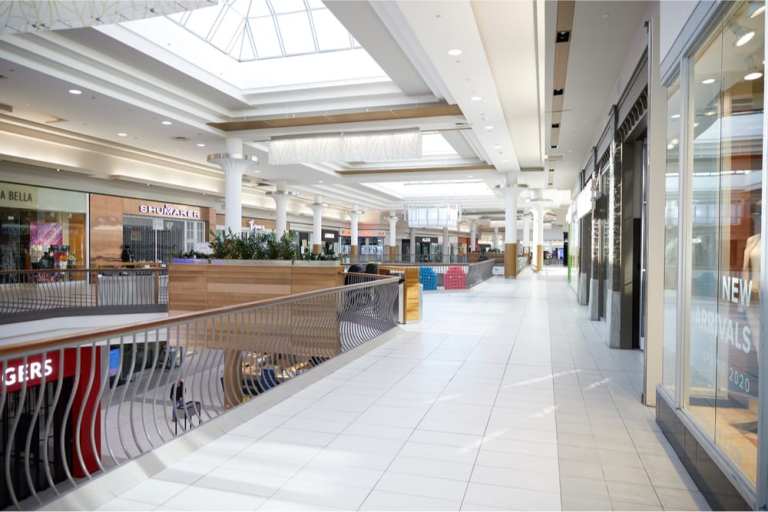
As talk turns to reopening retail it’s becoming painfully clear that the business timeline and the consumer timeline don’t match. And that could be devastating news for the retail sector most in need of a grand reopening: malls.
Evidence of that disparity is clearly detailed in the latest edition of the PYMNTS COVID-19 tracker. It shows that several conditions beyond simple government permission will be necessary for consumers to consider anything approaching non-essential normal shopping behavior. Social distancing is not just a Centers for Disease Control and Prevention (CDC) order. It is a real concern for consumers and a potential hindrance to retail recovery.
The PYMNTS research, which has now collected data on north of 8,000 consumers, shows several factors that could present obstacles to business as usual at malls and other non-essential retailers. First, the length of the coronavirus pandemic is very different in consumer’s minds than it is from government or private sector estimates. Some states have already set guidelines for retail reopening, many of them set from a range from immediate to May 1 to May 20. Consumers, surveyed on April 11, see a much longer period of time before they’re willing to say the pandemic is behind them. On average, consumers believe that the pandemic will last for 178 days until October, and that’s up from 138 days as reported in the survey conducted on March 17 as shutdowns were just starting to take hold.
The conditions under which consumers would consider returning to normal shopping behavior have very little to do with economic recovery or the need to spend money, as some analysts have suggested. They have everything to do with personal safety. When asked what their primary concern in returning to pre-crisis commerce levels, personal health (or the fear of getting sick) far outweighed any other concerns. Personal health was cited by 31.4 percent of respondents as their biggest concern. Fear of losing their job, which again would be an understandable concern, didn’t show up until number six on the list and even there it was only at 4.1 percent.
“Even after the ongoing pandemic, with social distancing as the new standard of living, people will reach the retail stores only for the essentials, and the rest will be accomplished online,” says CustomerThink. “A lot of people are going to realize that they don’t need as much as they used to spend — consuming less as recession steps in. Thus, retail shopping will see no ray of light soon. To find new ways of brand positioning, these stores needs to embrace technology and try to remove the fear as customers move through a store.”
In China retailers are implementing procedures that could become standard in the U.S. Malls have instituted temperature checks and control shopper traffic. Some stores disinfect items. Germany, as reported by CNBC, has allowed stores of more than 8,600 square feet to reopen as long as they institute social distancing and other safety practices. IKEA counts shoppers with a limit people of 640 shoppers in the store at one time.
For malls, which depend on attracting a crowd, the survey has more bad news. Consumers say returning to any kind of normal routine depends not on an all-clear from the government or availability of testing; it depends on a vaccine. The survey showed that 48.8 percent of consumers would need that to be developed before returning to normal activity, up from 39.7 percent on March 17.
“Current thinking is the development of a vaccine is a minimum of 12 months away to which you would be sensible to add a further six months for the global distribution of the vaccine,” says CustomerThink. “Until a vaccine is released expect some form of social distancing to remain in place that will rachet up when infections increase and rachet down when infections stabilize.”
The best way to shop and maintain social distance, is of course, to shop from home. That was also measured in the tracker. On March 6 only 12.3 percent of respondents said they would shift their shopping to digital channels. By April 11 that number spiked to 35.5 percent.
“It’s unclear whether people will still be comfortable shopping at discount stores, where customers pick up a lot of objects that others have touched,” says The Dallas Morning News. “And cheek-by-jowl rummaging could be an issue after an extended period of social distancing. Stores like T.J. Maxx and Marshalls may be forced to re-envision their cluttered aisles.”